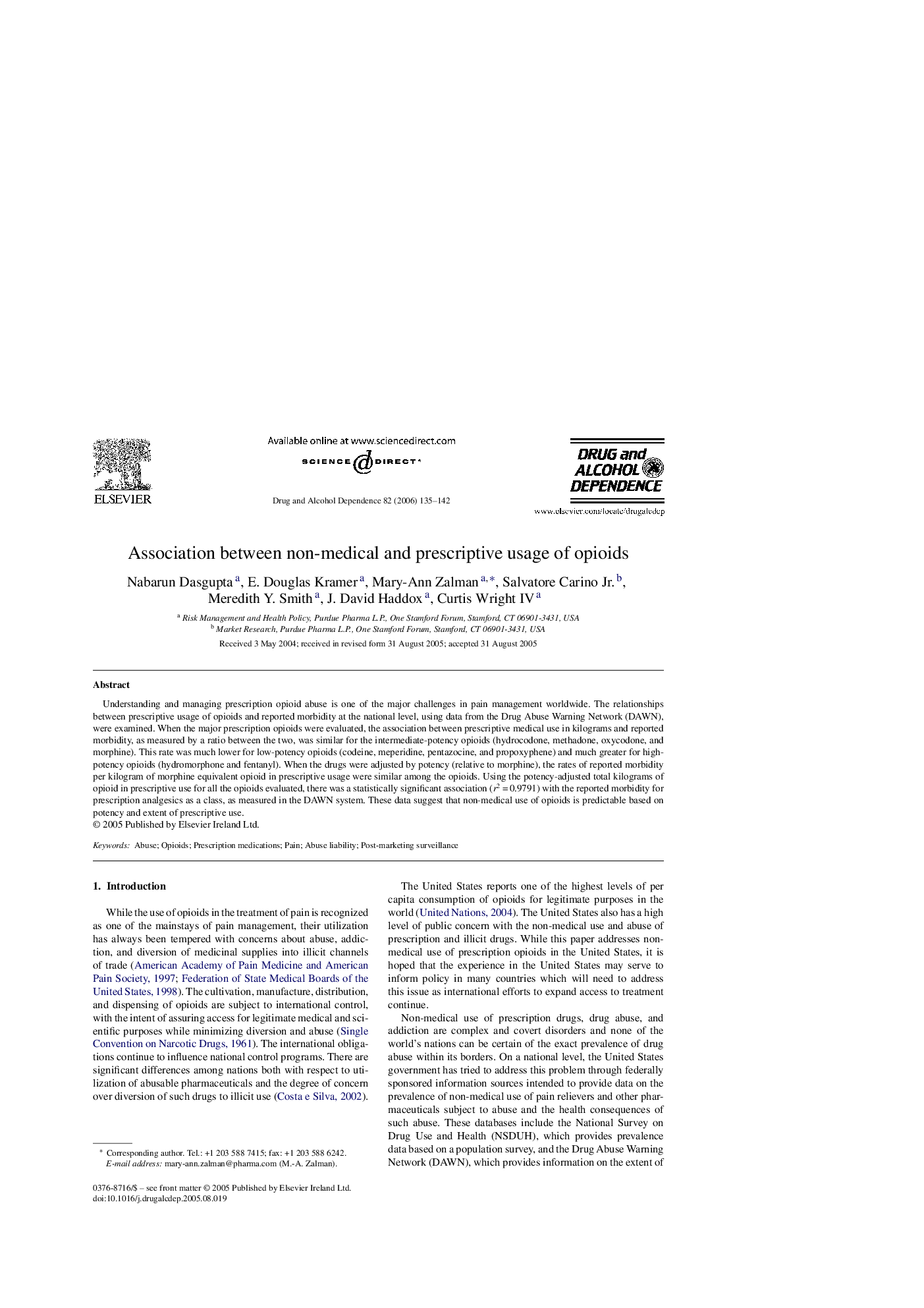| Article ID | Journal | Published Year | Pages | File Type |
|---|---|---|---|---|
| 1071495 | Drug and Alcohol Dependence | 2006 | 8 Pages |
Understanding and managing prescription opioid abuse is one of the major challenges in pain management worldwide. The relationships between prescriptive usage of opioids and reported morbidity at the national level, using data from the Drug Abuse Warning Network (DAWN), were examined. When the major prescription opioids were evaluated, the association between prescriptive medical use in kilograms and reported morbidity, as measured by a ratio between the two, was similar for the intermediate-potency opioids (hydrocodone, methadone, oxycodone, and morphine). This rate was much lower for low-potency opioids (codeine, meperidine, pentazocine, and propoxyphene) and much greater for high-potency opioids (hydromorphone and fentanyl). When the drugs were adjusted by potency (relative to morphine), the rates of reported morbidity per kilogram of morphine equivalent opioid in prescriptive usage were similar among the opioids. Using the potency-adjusted total kilograms of opioid in prescriptive use for all the opioids evaluated, there was a statistically significant association (r2 = 0.9791) with the reported morbidity for prescription analgesics as a class, as measured in the DAWN system. These data suggest that non-medical use of opioids is predictable based on potency and extent of prescriptive use.
